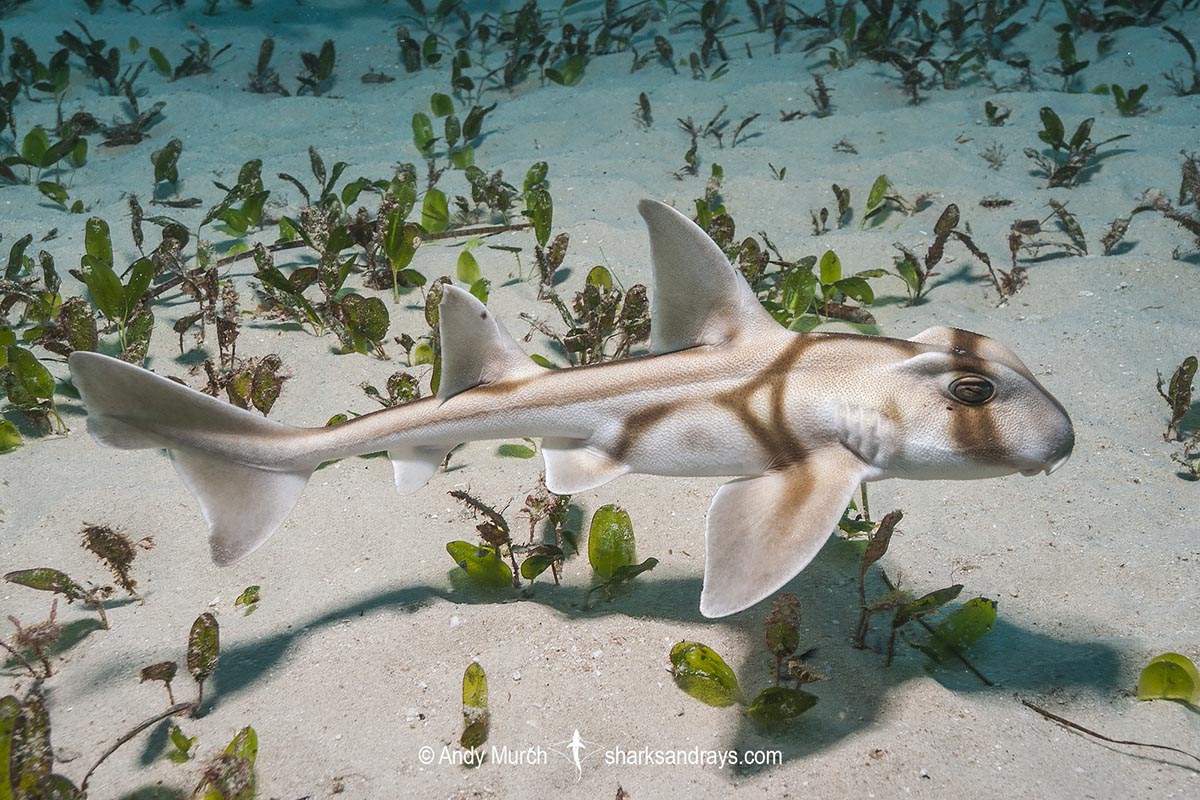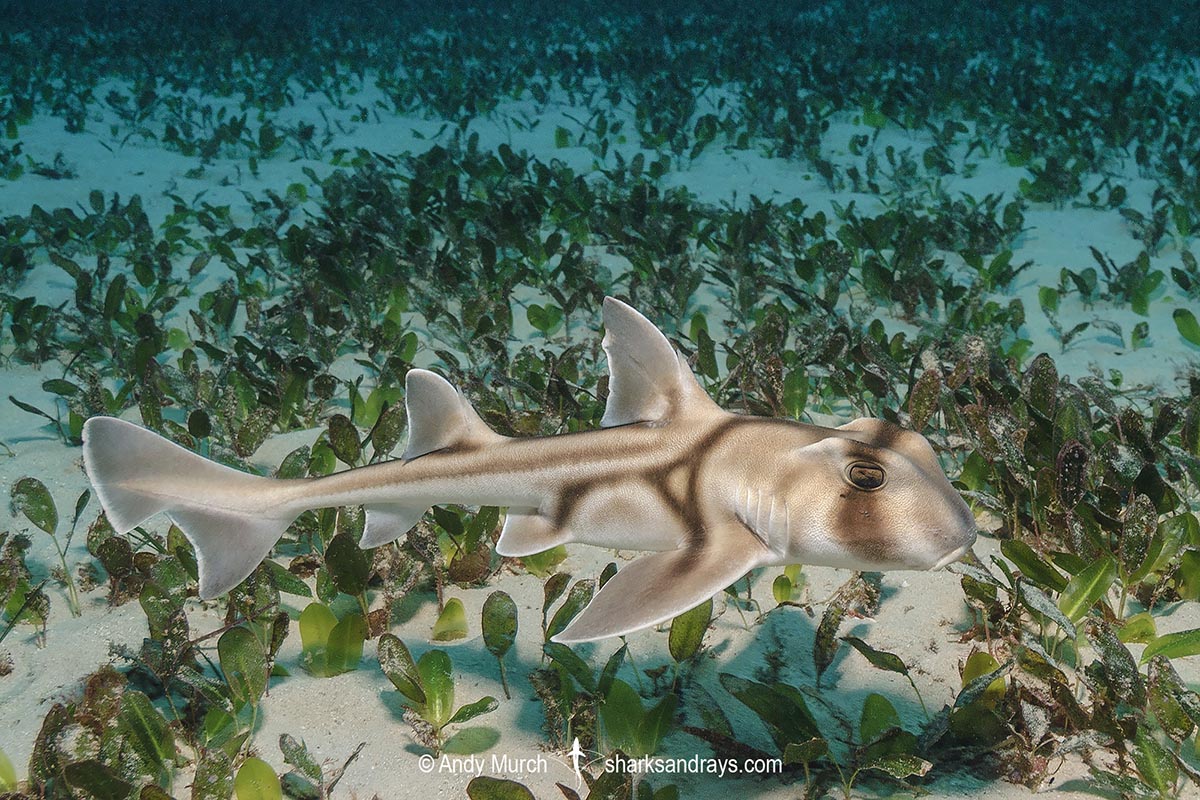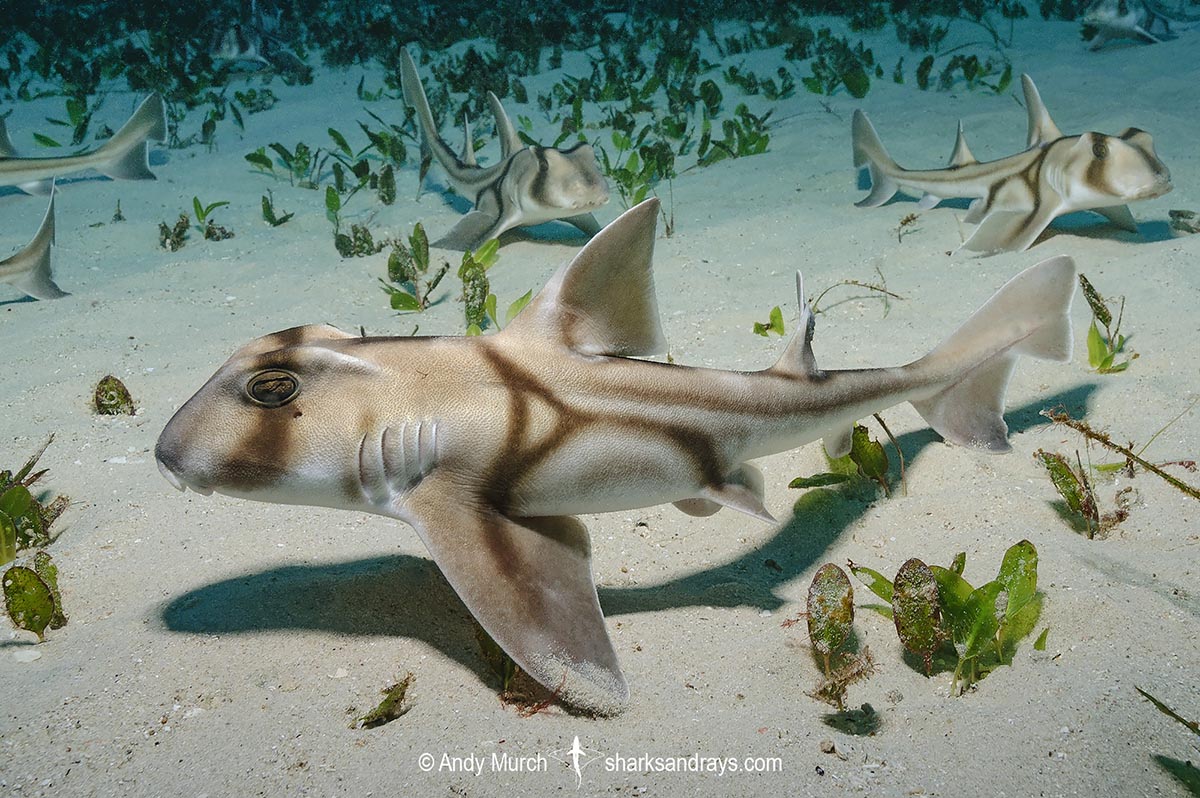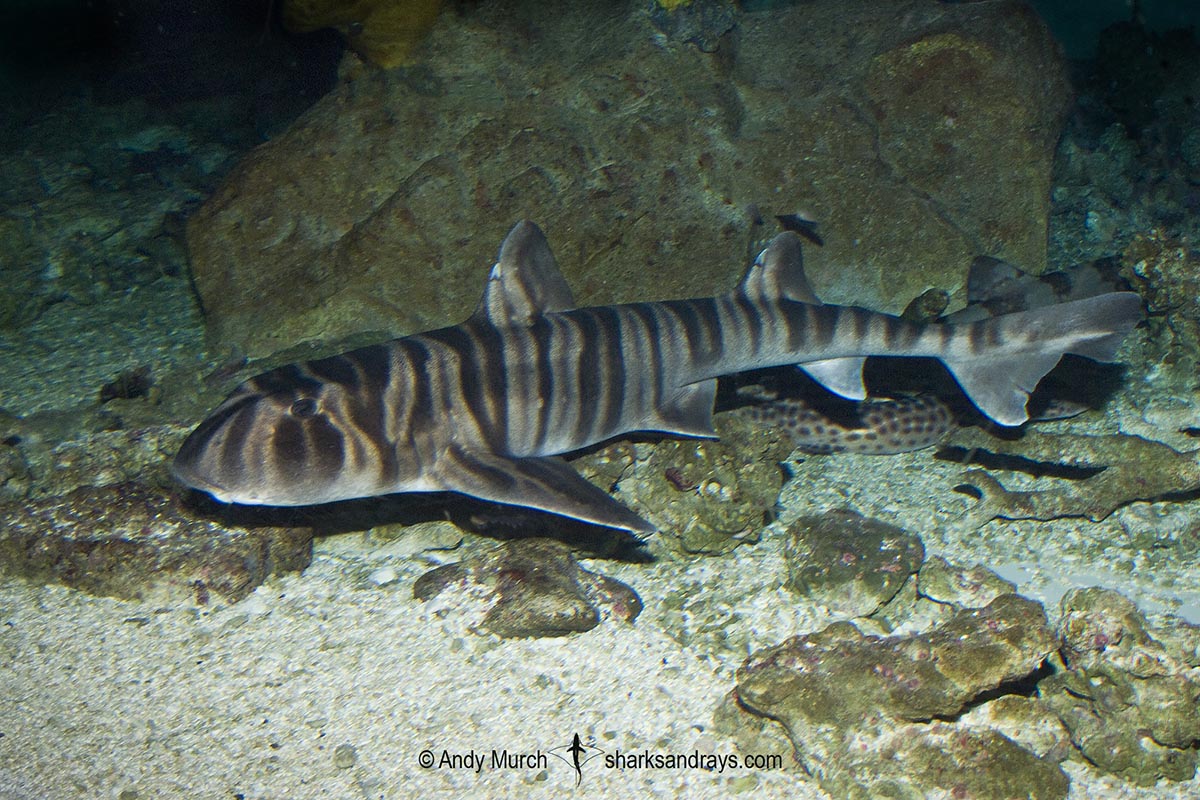Common names
Port Jackson Shark.
Binomial
Heterodontus portusjacksoni
Synonyms
Cestracion heterodontus, Cestracion philippi, Cestracion philippii, Heterodontus bonaespei, Heterodontus philippi, Squalus jacksoni, Squalus jacksonii, Squalus philippi, Squalus philippinus, Squalus portusjacksoni.
Identification
Stout body. Large square head with prominent ridges above eyes. Two tall dorsal fins with pointed apexes; each with a spine at its origin. First dorsal fin origin anterior to pectoral fin insertion. Second dorsal fin origin level with pelvic fin insertion. Pectoral fins much larger than first dorsal. Pelvic fins smaller than second dorsal fin. Large, triangular caudal fin with prominent subterminal notch.
Dorsal coloration may be cream, light brown, or greyish with a reddish-brown or black bridle pattern. Juveniles usually much lighter than adults.
Size
Maximum length usually does not exceed 165cm but there is one record of a whopping 237cm animal. Size at birth 18-31cm.
Port jackson sharks vary greatly in size by region, with east coast animals attaining much greater lengths than west coast animals.

Conservation Status
LEAST CONCERN
the Port Jackson Shark is an abundant species that is caught in large quantities in several fisheries across its range, but most animals are released alive and post-release survival rates are high.

Habitat
Temperate seas. Sandy bays adjacent to rocky reefs and in kelp. From intertidal to at least 275m. Often found in shallow bays.
Distribution
Temperate Australia. Found from Byron Bay southward, around the south coast (including Tazmania), to the Abrollos in the northwest. Records from Queensland may be misidentifications.
One verified record from New Zealand may be a vagrant that overshot Tasmania or possibly an aquarium release.
Reproduction
Oviparous. Like other heterodontids, the Port Jackson shark lays auger shaped egg cases.
PJS’s deposit their egg cases in very shallow water, often less than 5m deep. They have been documented holding their egg cases in their mouths and rotating their bodies to literally screw the eggs into cracks in the reef.
Diet
The Port Jackson shark’s diet is composed of sea urchins, other invertebrates, and small fishes.
Behavior
Considering that heterodontid sharks are relatively poor swimmers, some tagged Port Jackson sharks migrate over impressive distances (up to 850 miles) from their breeding grounds in the northern part of their range, to their summer hunting grounds in South Australia and Tasmania. Others simply disappear for the summer; probably moving into deep water where there are no acoustic receivers to record their presence.
During the breeding season, Port Jackson Sharks exhibit a high level of site fidelity, with males/females spending about 90/85% of their time, on a single breeding reef and coming back to the same sites year after year (C. Brown and N. Bass, pers. comm., February 2015).
Reaction to divers
Very easy to approach. Remains motionless unless closely molested, at which point port jackson sharks usually retreat deeper into crevices or move to a quieter resting place.
Diving logistics
Port Jackson Sharks are relatively abundant along the coast of New South Wales. Nelson Bay, Sydney, and Jervis Bay seem to get a disproportionately high amount of sightings but this may simply be because they are dived more heavily than other spots.
On the west coast, I stumbled upon a nursery area where hundreds of juvenile Port Jackson sharks were sitting out in the open in a shallow bay next to a sea lion colony. PJs are known to return to the same breeding sites every year, so the presence of juveniles in that spot will probably be quite likely in early May; when I dove there.
What’s new
View our full list of updates
Similar species
Crested Hornshark Distinguished by more pronounced ridges above eyes and pattern of large dark patches on a light grey background.
Zebra Bullhead Shark Distinguished by vivid pattern of zebra-like vertical stripes.








